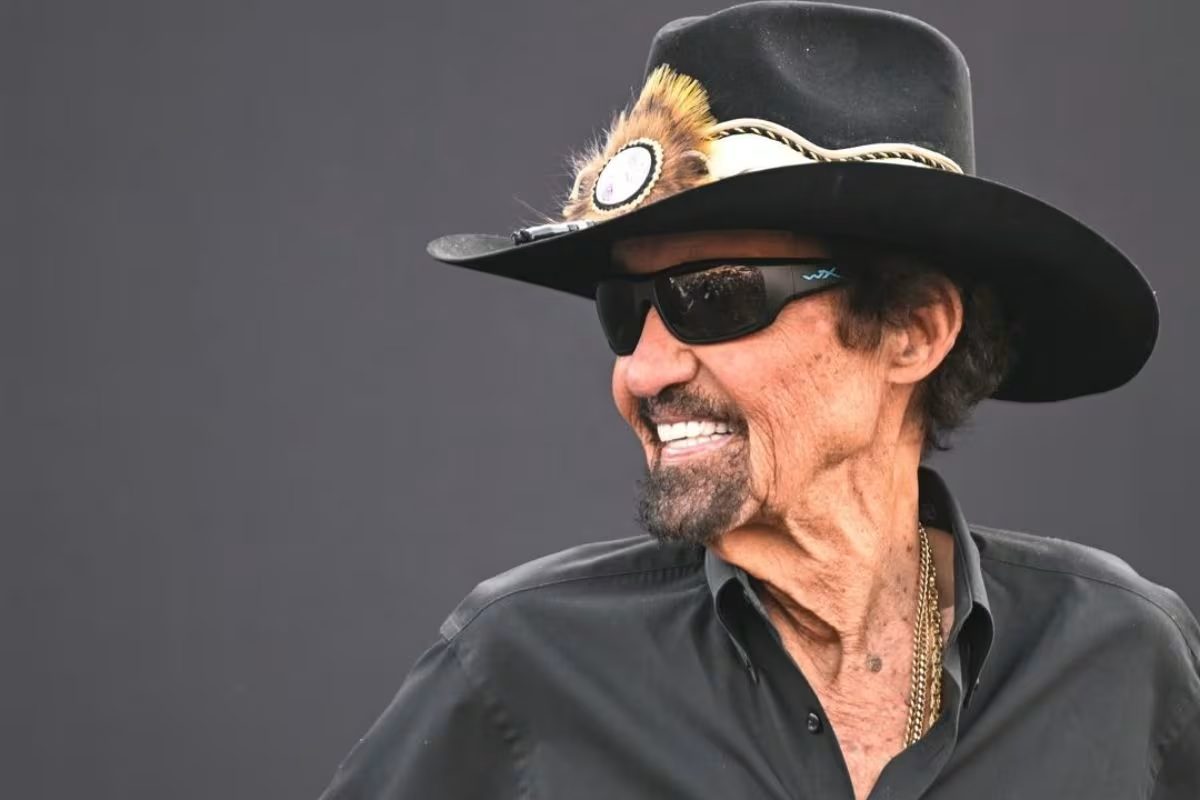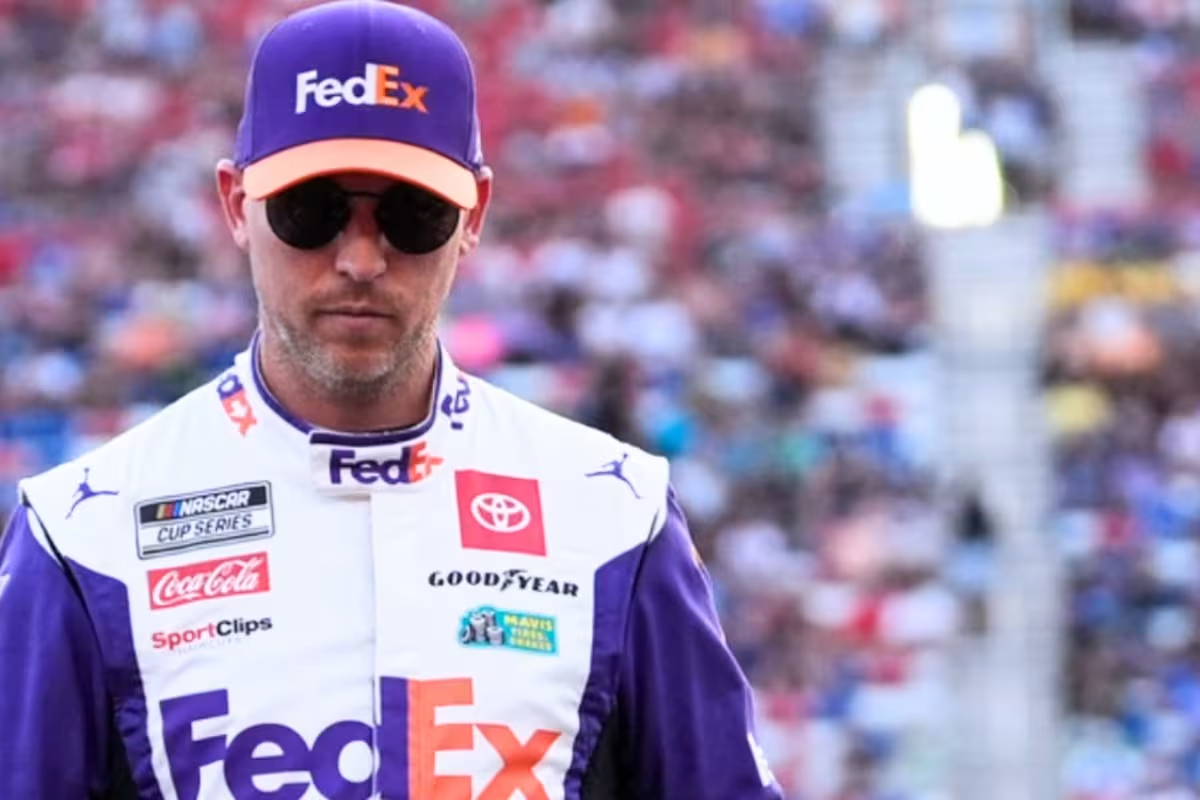Denny Hamlin and Richard Petty’s Game Changing Proposal: Denny Hamlin and Richard Petty‘s recent proposals to improve NASCAR’s short tracks show a critical juncture for the sport, particularly in view of declining fan engagement. By advocating for increased horsepower and a thorough redesign of the next-gen car, they aim to rekindle the excitement traditionally associated with these venues. However, the effectiveness of these initiatives hinges on a broader acceptance within the community and the potential impact on the competitive landscape. As the sport grapples with its identity, the pivotal question remains: can these changes truly resonate with fans and drivers alike?
Key Highlights
- Richard Petty advocates for increased horsepower on short tracks to enhance competition and excitement in NASCAR races.
- Denny Hamlin and Dale Earnhardt Jr. call for a complete redesign of the next-gen car to improve performance on oval tracks.
- NASCAR’s proposed changes for 2024 include a new aero package, but drivers believe it’s insufficient without addressing the car’s fundamental design.
- Short tracks are vital for maintaining NASCAR’s identity and community engagement, making their preservation crucial for the sport’s future.
- Collective driver advocacy emphasizes the urgent need for reforms to ensure competitive racing and prevent declining viewership in NASCAR.
Richard Petty’s Reaction to Bristol Race
Richard Petty’s reaction to the recent Bristol Motor Speedway race highlights a growing discontent among veteran drivers regarding NASCAR’s short-track offerings. Petty’s observation that the race was devoid of excitement, particularly given Kyle Larson’s dominance leading 462 of the 500 laps, emphasizes a critical issue: the lack of competitive balance and unpredictability in short-track events.
Once a hallmark of NASCAR, the thrilling wheel-to-wheel racing that characterized Bristol appears to have diminished, raising concerns among seasoned drivers about the efficacy of the current short-track package.
The contrasting experience from the spring race, where teams grappled with unexpected tire wear and tactical racing, emphasizes the inconsistency in NASCAR’s short-track events. While that race showcased the importance of tire management and strategy, the recent race felt stagnant, lacking the dramatic turns that fans and drivers alike have come to expect.
This dissatisfaction is not merely anecdotal; it reflects a broader trend where veterans like Petty and Denny Hamlin are openly questioning NASCAR’s direction.
The implications of Petty’s remarks extend beyond personal preference; they highlight a potential crisis in maintaining audience engagement. As veterans express their disappointment, the need for NASCAR to reassess its short-track format becomes increasingly urgent.
It is crucial to reinvigorate these races to guarantee they capture the essence of competition and excitement that has historically defined the sport. In doing so, NASCAR could not only appease its veteran talent but also reignite fan enthusiasm for short-track racing.
NASCAR’s Changes for 2024
As NASCAR gears up for the 2024 season, the introduction of a revised aero package signifies an attempt to boost competition, albeit with limited scope. The changes include the incorporation of splitter stuffers, an increase in spoiler width from two to three inches, and simplified diffuser components. Despite these adjustments, the horsepower remains unchanged at 670, which has raised concerns among drivers regarding overtaking opportunities on the track.
“The more you can get us out of the gas, which means if we have more horsepower, we have to let off sooner, that gives us the opportunity to overtake for the cars behind. Fifty horsepower, while it may not be a game changer, any horsepower gain will be an advantage for passing.”-(hamlin)
Denny Hamlin has argued for an increase in horsepower, suggesting that even a modest gain could improve competitive dynamics. His emphasis on the need for greater acceleration reflects a broader desire among drivers for more engaging racing. The table below summarizes the key aspects of the 2024 changes:
| Component | Previous Specifications | 2024 Specifications |
|---|---|---|
| Spoiler Width | 2 inches | 3 inches |
| Horsepower | 670 | 670 |
| Diffuser Complexity | Standard | Simplified |
While NASCAR’s decision to maintain the current horsepower level aligns with safety considerations, it raises questions about the potential effectiveness of the new aero package in fostering overtaking and competition. The limited changes may not sufficiently address the concerns raised by drivers like Hamlin, who advocate for a more thrilling racing environment.
Richard Petty’s Call for Change
The voice of experience resonates strongly in Richard Petty‘s recent advocacy for increased horsepower on NASCAR’s short tracks. As a seven-time Cup Series champion and a short-track legend with 552 starts and 128 wins, Petty’s insights carry considerable weight within the racing community. His call for extra horsepower stems from a keen understanding of how the current car dynamics affect competition, particularly regarding momentum and track position.
“Until they give them a little bit of horsepower, at least on the short tracks. Because when the cars get down below’em then the outside grove was so fast. If the guys had a little bit of horsepower. Once they got down there, they could at least come off the corners. When they run low, it bogs the car down.”-(richard)
Petty highlights a critical issue: when cars lose power in the low groove inhibiting their ability to exit corners effectively. This loss of power diminishes the excitement of racing, as drivers struggle to maintain speed while maneuvering the turns. Petty argues that enhancing horsepower would allow competitors to better utilize the outside groove, creating more dynamic racing scenarios and encouraging overtaking maneuvers.
View this post on Instagram
Petty’s assessment of recent races as “the least exciting” reflects not merely personal preference but a profound understanding of what makes racing thrilling for fans and drivers alike.
By advocating for changes rooted in historical performance and competitive integrity, Petty joins a chorus of voices urging NASCAR to reconsider its regulatory guidelines.
Lead Changes and Short Track Concerns
Lead changes have become a pressing concern in NASCAR’s short track races, where the excitement that once characterized these events seems to be dwindling. Recent data demonstrates this decline dramatically; the Bristol race witnessed only eight lead changes, a noticeable contrast to the 54 observed in the previous event. This reduction is not an isolated incident, as seen in Richmond, where merely three drivers led 339 of the 400 laps. Such statistics indicate a troubling trend that undermines the competitive spirit traditionally associated with short tracks.
The current landscape reveals a considerable influence of tactical decision-making, particularly during stage breaks, where drivers prioritize points over aggressive racing. This calculated approach has resulted in fewer opportunities to challenge for the lead, stifling the dynamic nature of competition.
While some attribute the lack of lead changes to reduced tire wear, many veterans argue that the next-gen car‘s design plays a critical role in this phenomenon. The car’s handling characteristics may favor stability over unpredictability, thereby compromising the very essence of short track racing.
As the sport grapples with these issues, the implications are profound. Fans are left yearning for the thrilling battles for position that once defined these races, while teams must adapt to a landscape where lead changes are increasingly rare. Addressing these concerns is paramount for revitalizing the excitement of short track racing and ensuring NASCAR’s enduring legacy.
Denny Hamlin and Dale Earnhardt Jr.’s Opinions
Denny Hamlin’s and Dale Earnhardt Jr.’s perspectives highlight a crucial consensus regarding the deficiencies of the next-gen car in the current NASCAR landscape.
Hamlin has been vocal about the necessity for a complete redesign of the car, emphasizing that merely increasing horsepower is insufficient.
“The car needs to be re-designed; it needs a full redesign. It can still be called next-gen, but it needs to be redesigned everywhere — front, middle, rear, competition. The whole thing needs to be redesigned.” -(hamlin)
This assertion highlights his belief that NASCAR’s attempts to address performance issues through tire modifications fail to tackle the fundamental problems with the vehicle itself.
“We bounce back and forth between where we put the blame every time we have one of these bad races. Oh! it’s the tire, and then the next week it’s a car thing. As you know, Denny (Hamlin) made the case this week on his show that it’s the car. And so no one’s wrong. But I’m gonna say this that race car is a sports car. That is a sports car running ovals.” -(dale jr.)
Supporting Hamlin’s viewpoint, Earnhardt Jr. points out that the next-gen car is ill-suited for oval racing, likening it more to a sports car than a traditional stock car.
He argues that the engineering choices reflect a design more compatible with road courses, citing the influence of Australian Supercars and GT3 components. His observation that “that race car is a sports car” serves as a clear reminder of the misalignment between the vehicle’s capabilities and the demands of oval racing.
As the season approaches its climactic moments, particularly with the impending Martinsville race, both Hamlin and Earnhardt Jr. convey a sense of urgency.
Their insights emphasize that without prompt and crucial changes, NASCAR risks seeing further disappointments in race competitiveness, potentially threatening the integrity and appeal of the sport itself.
News in Brief: Denny Hamlin and Richard Petty’s Game Changing Proposal
The proposals put forth by Denny Hamlin and Richard Petty highlight critical concerns regarding the current state of NASCAR’s short tracks. By advocating for increased horsepower and an extensive redesign of the next-gen car, these initiatives seek to restore excitement and engagement in the sport. Prioritizing driver input and fan feedback may foster a renewed sense of competition, ultimately preserving the essence of short-track racing and reinforcing NASCAR’s connection to its dedicated community.
ALSO RAED: Denny Hamlin’s Crew Chief on Bristol’s Outcome: “Good Job Everybody”


